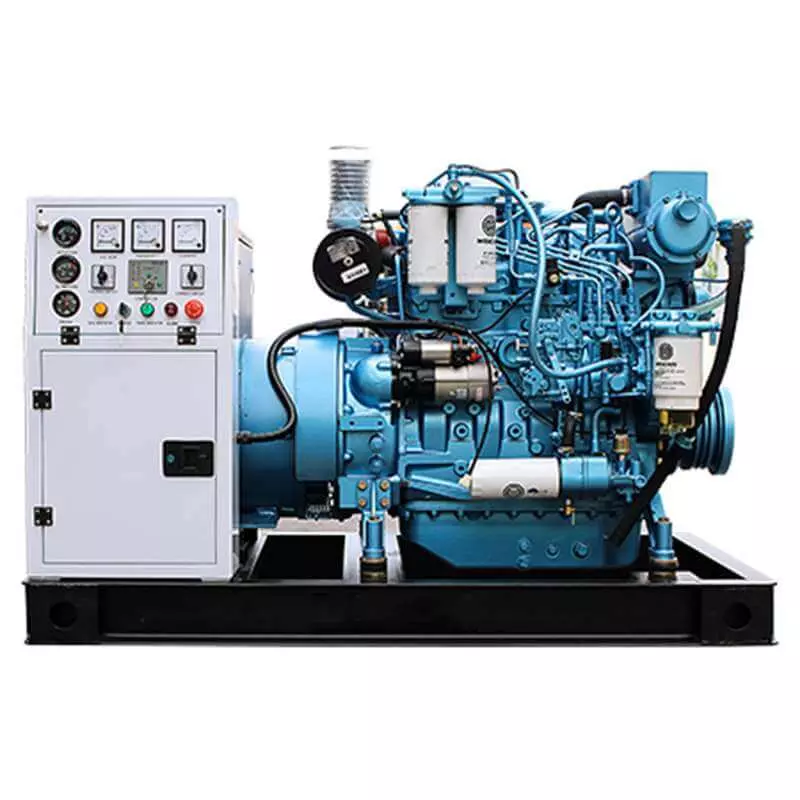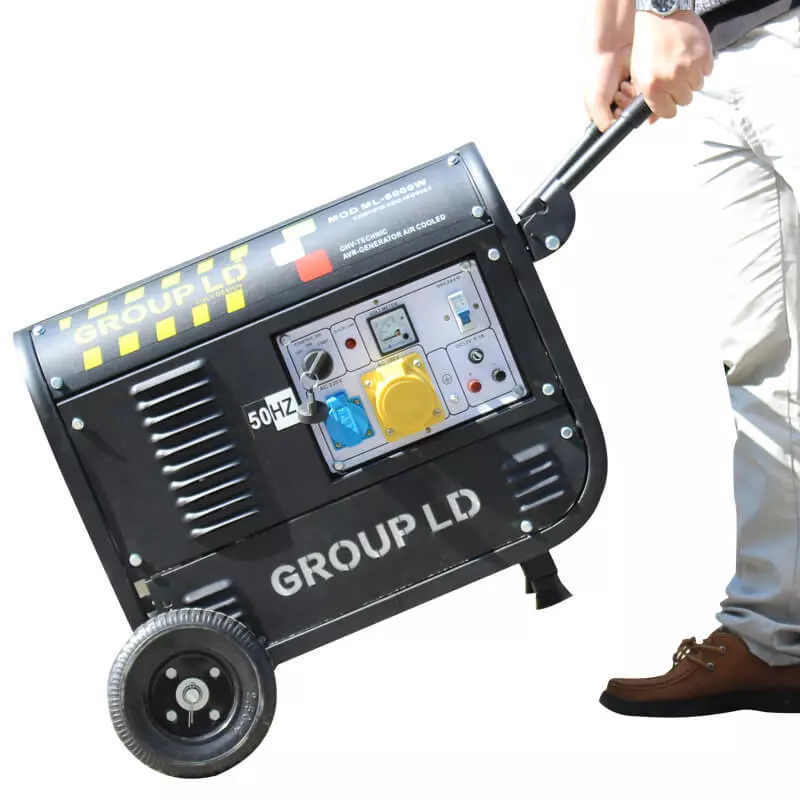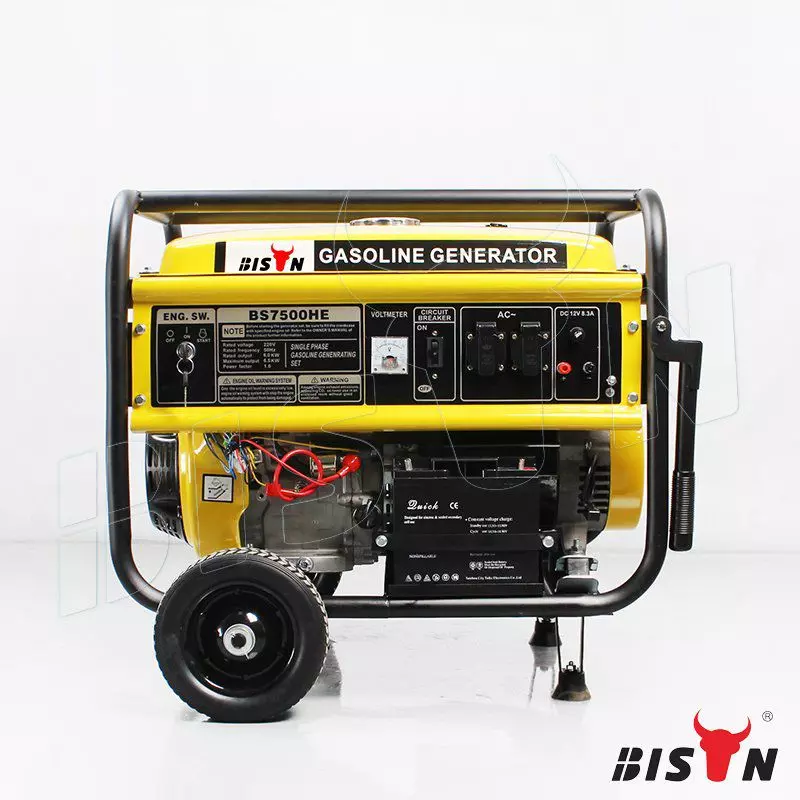How to transport a generator to a new destination (7 easy steps)
2022-10-09
Table of content
You don’t have to leave all the comforts of home behind when you head out to the wilderness for camping. Bringing a generator opens up a lot of possibilities, from lights to stoves. However, some precautions must be taken when transporting the generator, including preventing damage to the generator itself and ensuring there is enough fuel to reach the destination to run it.
In this blog post, you’ll find tips to transport a generator to a new destination safely. If you follow all the tips, you’ll be able to move your generator to your desired location successfully.

transport generator
How to transport a generator
1) Preparation

Preparation
Before moving the generator, you have to make sure everything is ready. First, close the fuel valve - it should already be closed as it should always be closed if not running! Otherwise, fuel will enter the crankcase and dilute the engine oil. If you have been running the generator, allow it to cool for 15-20 minutes before continuing. When carrying the generator, use any handles provided and always keep the generator upright. Turning it over can have a detrimental effect, if not just spill fuel.
Remember that every generator is different, and safety and maintenance procedures and operations may vary from model to model. Please note other information in the owner’s manual before using or moving the generator.
2) Loading generator
If you are equipped with fold-out handles, use them to push your generator into place. Once you’re ready to load the generator, you’ll need at least one other person to help you lift it. You can use up to four people, one in each corner if you want. You can also pick up the generator with a crane or winch if you have one available.
3) Where to place your generator
The best place to haul a generator is on a pickup truck or trailer. Consider purchasing a hitch-mounted or A-frame freight carrier if you don’t already own a pickup or trailer.
Even if you have a luggage rack, the generator should not be placed on top of the vehicle. Most cars cannot safely transport the weight of portable generators, which can reach 250 pounds. Your generator can also become a deadly projectile if you get involved in an accident.
4) Safe and reliable transportation
It would help if you adequately secured your generator once you’ve located a place for it. If you have a weatherproof storage container, you can put the generator in it. Heavy-duty plastic storage containers or “tuff boxes” can also be retrofitted as suitcases. A lot of packing material should be used to prevent the generator from slipping.
You can decide to ship your generator without putting it in a container. When doing this, you’ll want to provide some weather protection, wrapping the generator in a heavy-duty tarp and making sure to cover it on all sides before securing it with bungee cords.
Do not place generators on top of anything else. It would help if you didn’t put anything on top of the generator when hauling it. Make sure to load the equipment so you can unload it quickly once you get to your location.
5) Fixing the generator
Secure your generator with bungee cords or tie-down straps to keep it from moving. Alternatively, you may also want to support or block the generator by placing additional weights around it.
Generators are a very sought-after target for thieves. Therefore, you may need to secure your generator with a lock and chain to prevent it from being stolen, especially if you carry one.
6) Transporting fuel
Ensuring your fuel reaches the campsite is half the battle of transporting the generator. Fuels are more volatile and fluid and, therefore, less predictable. Fortunately, a simple fuel can solve most problems. Still, safe transportation is important, and you certainly don’t want to spill a bunch of smelly gasoline on your vehicle.
Start by securing the lid of the fuel tank and any ventilation there. An open or unsecured lid could mean a spill or smoke leak.
Next, place the fuel tank in your car’s trunk or your truck’s chassis. Avoid putting it in the passenger compartment, as even an empty container can leak residual steam. Secure the container upright so that it does not move during transport. A bungee cord or net works well here, or you can use a truck box. As a warning: don’t let fuel sit in your car for too long. The risk is the possible leakage of fumes and the risk of burning. Just remember to remove the fuel container as soon as possible.
7) Unloading
Undo all straps and remove any tarps or covers. Have another person help you lift the generator from its shipping position to a flat surface. After doing this, check the device for any damage during transportation. If you notice damage, please get in touch with a professional to fix it.
How to transport an RV Portable Generator
For safety, many RV generators have been permanently installed in the compartment. Fasteners should be checked regularly before travel to ensure bolts and screws are tight.
If you bought a portable generator separately for your RV, be sure to adhere to the indicated shipping instructions. If possible, secure the generator in a trailer or RV bed. If not, it is advisable to move the generator while taking all necessary safety measures.
How to transport a worksite generator
Many contractors require power in remote job sites, making portable generators a must. Most generators are built for harsh conditions, but be careful when moving.
The generator should be permanently attached to the trailer or truck chassis. This will help protect them during their journey to and from the workplace.
Your generator - your responsibility

Your generator - your responsibility
A generator costs money, but it’s an investment in having electricity available when you need it. It is your responsibility to keep your generator running for many years. Transporting it to work requires safety measures to keep it running.
The operator’s manual that comes with your generator is an invaluable tool to help you maintain and transport it. Remember that each manufacturer has guidelines and procedures for operation, maintenance, and shipping. For further instructions, make sure to consult the documentation that came with your dedicated generator.
How to transport a larger generator
Some generators have very large sizes and are heavy. Some generators weigh around 90,000 lbs. A certified trucking company should transport these types of heavy-duty generators.
FAQs
1) Can you put a generator in the car?
Never put the generator in the car. Smoke in the fuel tank can overwhelm the driver and passengers. The weight and bulk of the generator can cause injury to people inside or trying to manoeuvre it into the car. Transport the generator by truck or trailer and follow the operating instructions.
2) Can you transport the generator on its side?
The generator should not be placed on its side or upside down. Engine parts can be harmed by fuel and oil leaks. Also, other engine components may be damaged. Always transport the generator in an upright position on a truck or trailer.3) Can I move the generator while it’s running?
Do not. The engine gets hot, and you could get serious burns if you try to move it while it’s running. There is a possibility of electric shock. Fuel lines can burst and start a fire. Parts may also be damaged.
Be sure to turn off the generator and allow it to cool before attempting to move it.
4) Can you run a generator in a truck bed?
Follow the user manual’s guide to running the generator, and the answer is probably “yes.” Many contractors operate their work generators safely from a truck bed or trailer. Plus, you can run a portable generator from the truck bed for RV or outdoor use. The key is to follow all the generator manufacturer’s safety and operating guidelines in accordance with the operator’s manual.
5) Is the generator safe to transport?
The actual transport of the generator is safe if you follow simple tips and tricks. For example, use tie-down straps or bungee cords to secure the generator.
If you plan to camp on a trailer, use the cargo box that plugs into the rear bumper to provide a platform for loading the generator. This makes the generator safe and reliable.
6) Does the tank need to be emptied for transport?
In order to transport a generator, you need to keep the fuel valve fully closed. Now drain the fuel from the carburettor float bowl. Also, drain its fuel from the settling cup.
Add the correct amount of the specific fuel conditioner to the tank and tap it. Following these tips and tricks, you don’t need to empty the tank. However, if the valve is loose, it is not suitable to transport the generator.
To drain the fuel tank from the generator:
1. Move the fuel tank vent to the closed position.
2. Remove the cap from the tank.
3. Take a U-shaped strainer at the bottom of the tank.
4. Place a suitable container under the tank to allow all gasoline to drain from the tank.
7) Can you put a specific tarp on the generator when shipping?
Yes. You can put a tarp over the generator when transporting it in your car, especially if it’s raining. However, make sure there are no signs of moisture, as water could enter sensitive areas of the generator. Also, you cannot wrap the tarp completely around the generator.
If the generator is open on all sides, you can use the boat canopy to protect the generator. Covering the generator with a tarp provides adequate ventilation from all the slides.
Conclusion
Hopefully, some of these tips will get you and your generator to your destination. If you’re still looking for some generator tips, or you’re interested in purchasing a new generator, contact BISON. Contact us today and let our professional team answer all your questions and help you find what you’re looking for!




